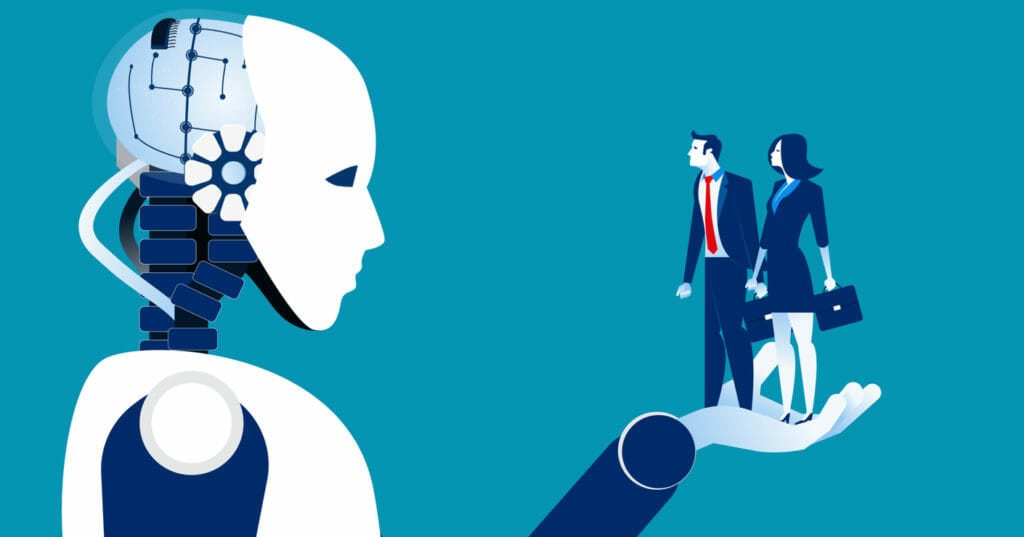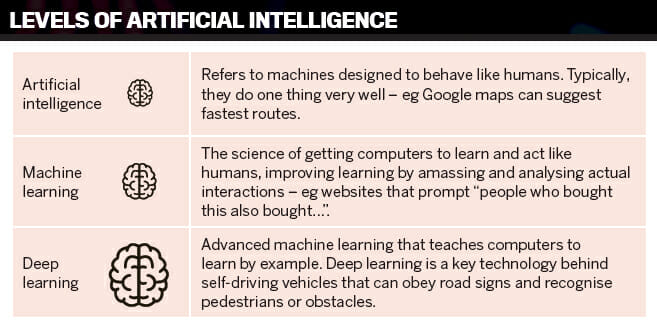Will the Future of HR Still Be Human?
Will the Future of HR Still Be Human?

Ironically, the biggest forces shaking up the HR industry these days aren’t human at all. Artificial intelligence (AI), machine learning (ML), and natural language processing (NLP) are all drastically transforming the world of recruiting and hiring.
Just look at the Artificial Intelligence Index 2018 Annual Report by Stanford University, which shows that the number of active U.S. startups developing AI systems has increased 14-fold since 2000. There is clearly a hunger for this type of technology, but we’re only just starting to grasp what’s possible with these shiny new toys. While we’ve all had our own successes and failures with chatbots, there are some applications of AI and ML that are truly game-changing. Let’s dive in.

Killing Repetitive, Low Value-Add Tasks
Kate Guarino, Director of Human Resources Operations for Pega, says AI presents the opportunity for HR to automate those boring, mindless tasks that end up stealing all your time. This is a fairly well-trodden space – perhaps your organization is already using AI to automate the steps of onboarding a new employee (i.e. allocating space, provisioning a laptop). Saving time in those areas helps HR teams pivot to make sure they focus on “value-add work like mentoring and continuous feedback.”
And therein lies the paradox of AI technology. At first blush, it seems like these advances are designed to replace human involvement. In fact, it’s quite the opposite. When AI operates like it’s supposed to, it facilitates more human interaction. The goal of technology is not to eliminate people – it’s to eliminate meaningless repetition.
Most HR professionals understand that AI will never replace the emotive, human element in hiring. Instead, it can alleviate tiresome tasks like sourcing, screening, and conducting preliminary interviews. John Feldmann, Communications Specialist for Insperity, says, “This will allow more time for hiring managers to build meaningful relationships with candidates, leading to a shorter time-to-fill and improved employee retention.”
Working Toward an Unbiased Hiring Process
Here’s a human question: how do you create a truly equal and diverse hiring process for all? Perhaps technology can answer that. AI-backed talent discovery businesses like HiringSolved and Plum promise to hire, grow, and retain top talent by ditching the traditional resume format. Instead, potential candidates take discovery surveys that collect information on background, culture fit, and cognitive ability. These results are graded by AI instead of people, in an effort to eliminate screener bias.
Another landmine in the process of hiring is that of language itself. A psychological tool called the Implicit Association Test (IAT) shows that people’s subconscious word associations indicate bias. “These biases find their way into job descriptions, as well as resume selections. Now, thanks to AI, algorithms can be designed to help employers identify and remove these bias patterns in language they use to improve their hiring communications and welcome diverse applicants,” researchers from the Human Resources Professionals Association noted.
It’s hard to imagine an objectively unbiased hiring process, but perhaps these technological safeguards could help shed light on blind spots in a company’s onboarding process. Think of them as additional lenses of perspective in an HR rep’s toolbox.
Putting Scheduling Nightmares to Bed
You might think the most difficult thing about an HR professional’s day is dealing with conflict. The fact is, that’s the easy stuff. The hard part is playing calendar tag – endlessly searching for available time slots for meetings, training sessions, or orientations. Enter companies like x.ai, which develop autonomous AI-assistants to manage scheduling. The tool can suggest where you should put your next meeting and even notify candidates when you are waiting for them.
Everything from sales demos to phone screens to happy hour with the marketing team can be seamlessly automated. If you just got goosebumps, chances are you’re a project manager or HR specialist.
Boosting Employee Engagement
Whenever we talk about company culture or morale, it tends to be discussed as the ephemeral, unmeasurable vibe of a workplace. But companies like IBM are working to create AI tools that can provide quantifiable insights and actions around nebulous things like engagement.
KangoGift is a tool for giving authentic feedback and praise in a timely manner. The all-digital platform solves the problem of employees not getting the recognition they deserve. Powered by the IBM Cloud and IBM Watson technology, KangoGift makes it easy to set up and manage both structured and on-the-spot recognition programs.
During performance reviews, managers can analyze keywords to view an employee’s recognition history, drilling down into the context and content of each recognition. Applying the same analysis enterprise-wide can pinpoint the buzz around influential people, key projects, and corporate values. And Watson Tone Analyzer and Personality Insights can reveal insights into the communications style of a manager, workgroup, or department.
The Future of HR
All of these tools are exciting, but they will only ever be as intelligent, predictive, and unbiased as the people making them. Make no mistake: AI is not a quick fix for solving systemic prejudice and misogyny in the hiring process. But when used properly, these technologies can act as checks and balances for brands. The human element of HR will never be replaced – but it can be aided.
Emotive Brand is a brand strategy and design firm in San Francisco.
Image







